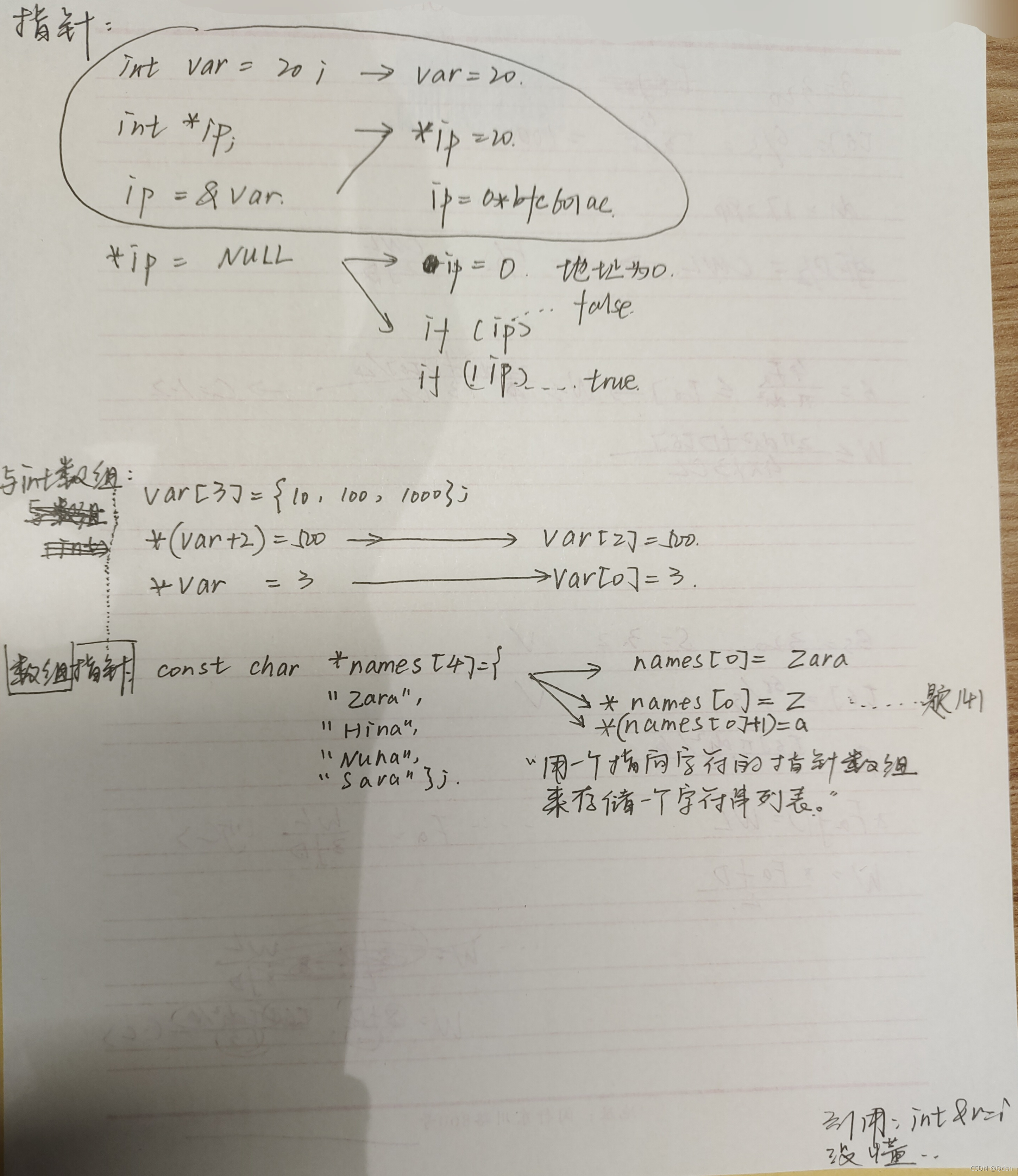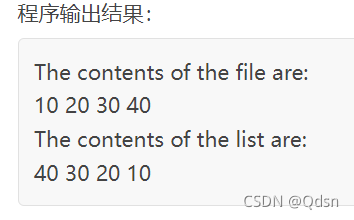
关于指针,菜鸟家的表述比较清晰了【https://www.runoob.com/cplusplus/cpp-pointers.html】

链表:
转载自【http://c.biancheng.net/view/1570.html】 还没太懂:
因为指向链表头的指针用于定位链表的头部,所以也可以认为它代表了链表头。同样的指针也可以用来定位整个链表,从头开始,后面跟着后续指针,所以也可以很自然地把它看作是代表了整个链表。
这个看起来很实用!
给到的一个实例程序,需要常看常新:
// This program illustrates the building
// and traversal of a linked list.
#include <iostream>
#include <fstream>
using namespace std;
struct ListNode
{
double value;
ListNode *next;
// Constructor
ListNode(double value1, ListNode *next1 = nullptr)
{
value = value1; next = next1;
}
};
int main()
{
double number; // Used to read the file
ListNode *numberList = nullptr; // List of numbers
// Open the file
ifstream numberFile("numberFile?dat");
if (!numberFile)
{
cout << "Error in opening the file of numbers.";
exit (1);
}
//Read the file into a linked list
cout << "The contents of the file are: " << endl;
while (numberFile >> number)
//>>表示读入数据到number,如果读取值非空,则进行操作
{
cout << number << " ";
// Create a node to hold this number
numberList = new ListNode(number, numberList);
}
// Traverse the list while printing
cout << endl << "The contents of the list are: " << endl;
ListNode *ptr = numberList;
while (ptr != nullptr)
{
cout << ptr->value << " "; // Process node
ptr = ptr->next; // Move to next node
}
return 0;
}

类似的原理&题目思路解释见【https://blog.csdn.net/weixin_39538889/article/details/85801412】,眼睛痛还没看
更新:关于 find() / end()
【这个讲的赞!】《undered_map的用法总结》【https://www.cnblogs.com/xuelisheng/p/10771961.html】
unordered_map的迭代器是一个指针,指向这个元素,通过迭代器来取得它的值。
它的键、值分别是迭代器的first和second属性。
1 it->first; // same as (*it).first (the key value)
2 it->second; // same as (*it).second (the mapped value)
.find() / end():返回的都是元素的迭代器(键+值)。
find()如果没找到:返回unordered_map::end。
括号内的参数是键key,但一般是“重要的信息”设成key,序号设为第二个值value。
例如【https://www.cnblogs.com/xuelisheng/p/10771961.html】中的示例代码:
#include<iostream> //map的基本操作如下
#include<map>
#include<string>
using namespace std;
int main()
{
// 构造函数
map<string, int> dict;
// 插入数据的三种方式
dict.insert(pair<string, int>("apple", 2));
dict.insert(map<string, int>::value_type("orange", 3));
dict["banana"] = 6;
// 判断是否有元素
if (dict.empty())
cout << "该字典无元素" << endl;
else
cout << "该字典共有" << dict.size() << "个元素" << endl;
// 遍历
map<string, int>::iterator iter;
for (iter = dict.begin(); iter != dict.end(); iter++)
cout << iter->first << ends << iter->second << endl;
// 查找
if ((iter = dict.find("banana")) != dict.end()) // 返回一个迭代器指向键值为key的元素,如果没找到就返回end()
cout << "已找到banana,其value为" << iter->second << "." << endl;
else
cout << "未找到banana." << endl;
if (dict.count("watermelon") == 0) // 返回键值等于key的元素的个数
cout << "watermelon不存在" << endl;
else
cout << "watermelon存在" << endl;
pair<map<string, int>::iterator, map<string, int>::iterator> ret;
ret = dict.equal_range("banana"); // 查找键值等于 key 的元素区间为[start,end),指示范围的两个迭代器以 pair 返回
cout << ret.first->first << ends << ret.first->second << endl;
cout << ret.second->first << ends << ret.second->second << endl;
iter = dict.lower_bound("boluo"); // 返回一个迭代器,指向键值>=key的第一个元素。
cout << iter->first << endl;
iter = dict.upper_bound("boluo"); // 返回一个迭代器,指向值键值>key的第一个元素。
cout << iter->first << endl;
return 0;
}
其结果为:
该字典共有3个元素
apple2
banana6
orange3
已找到banana,其value为6.
watermelon不存在
banana6
orange3
orange
orange
auto
在C++11标准的语法中,auto被定义为自动推断变量的类型。
不过C++11的auto必须给申明的变量赋予一个初始值,否则会报错。

